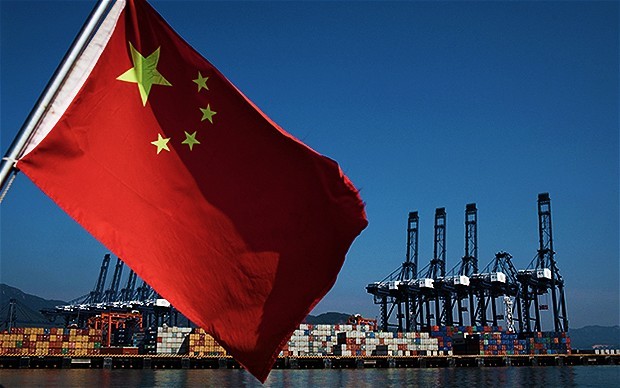China : Oct new yuan loans down sharply as property curbs start to bite

BEIJING : Chinese banks extended 651.3 billion yuan ($ 95.56 billion) in net new yuan loans in October, below expectations and falling sharply from September as policymakers pledged to prevent asset bubbles in the increasingly debt-fueled economy.
The People’s Bank of China has been keeping policy accommodative to spur growth – as evident by record bank lending so far this year – but it faces an uphill battle to divert money from the red-hot property market into the weak real economy.
“The drop in new lending last month was seasonal and does not reflect a shift in broad credit growth, which was stable in October,” Julian Evans-Pritchard at Capital Economics said in a note.
“This stability may not last, however, and we expect credit growth to decelerate further in coming quarters.”
Analysts polled by Reuters had expected new lending to have fallen back to 700 billion yuan from September’s three-month high of 1.22 trillion yuan.
New bank loans totaled 10.8 trillion yuan in the first 10 months of the year – an all-time high, according to Reuters calculations based on central bank data.
Lending has been driven heavily by robust mortgage growth as the housing market booms, with banks increasing their exposure to the sector to offset a surge in non-performing loans in more sluggish parts of the economy.
New household loans, mostly mortgages, fell to 433.1 billion yuan in October from 637 billion yuan in September, central bank data showed, suggesting demand for mortgages is cooling after a spate of steps by local governments to restrict home purchases to cool soaring prices.
The ratio of new household loans to total new loans rose to 66.5 percent from 52 percent in September, the data showed.
Highlighting underlying weakness in the broader economy, new medium- to long-term corporate loans fell sharply to 72.8 billion yuan from 446.6 billion yuan in September.
The central bank said this week that it will maintain ample liquidity in the economy while taking steps to prevent asset bubbles, adding that the balance between stabilizing growth and preventing bubbles has become more challenging.
NO BASIS FOR TIGHTENING
China’s total social financing (TSF), a broad measure of credit and liquidity in the economy, fell sharply to 896.3 billion yuan in October from 1.72 trillion yuan in September.
TSF includes off-balance sheet forms of financing that exist outside the conventional bank lending system, such as initial public offers, loans from trust companies and bond sales.
But broad M2 money supply (M2) grew 11.6 percent from a year earlier, the strongest in four months and slightly above forecasts of 11.4 percent.
“Liquidity in the interbank market has tightened some, but looking at M2 growth it is not that low, so I think overall policy is neutral. We can’t say there’s been tightening,” said Ma Xiaoping, HSBC economist in Beijing.
“There is still not a basis for tightening, as the real economy is still weak. It is too early for tightening.”
China’s economy expanded at a steady 6.7 percent in the third quarter and looks set to hit Beijing’s full-year target, spurred by stronger government spending and the property frenzy that are adding to its growing pile of debt.
China’s overall debt has jumped to more than 250 percent of GDP from 150 percent at the end of 2006, the kind of surge that in other countries has resulted in a financial bust or sharp economic slowdown, analysts say.
M1 money supply, which includes cash and short-term deposits, rose 23.9 percent in October on-year versus September’s 24.7 percent rise.
A widening gap between M1 and M2 growth has fueled concerns about a “liquidity trap” in the economy where companies remain wary of investing regardless of how much stimulus policymakers pump into the system.
The gap narrowed to 12.3 percentage points in October from 13.2 percentage points in September.





